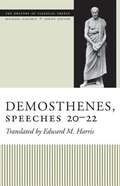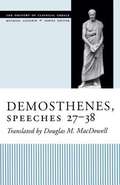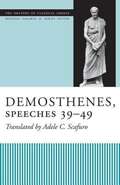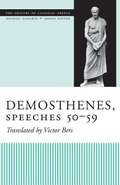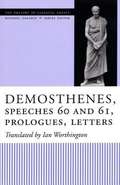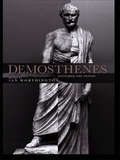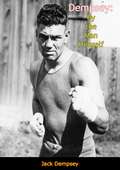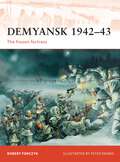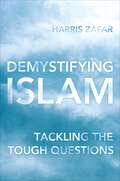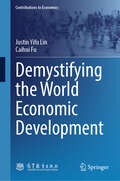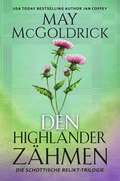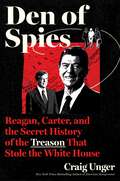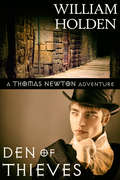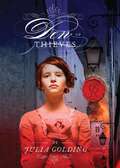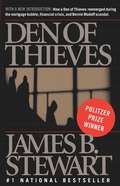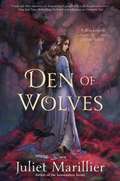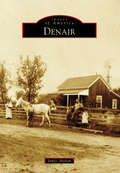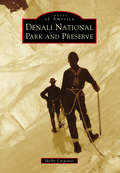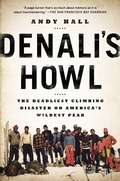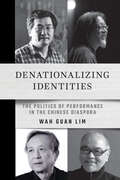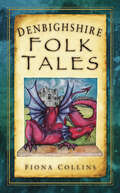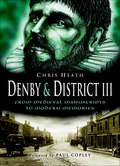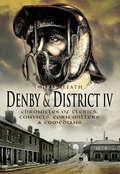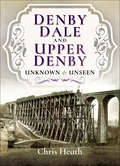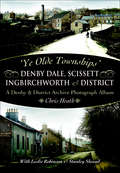- Table View
- List View
Demosthenes, Speeches 20-22
by Edward M. HarrisThis is the twelfth volume in the Oratory of Classical Greece. This series presents all of the surviving speeches from the late fifth and fourth centuries BC in new translations prepared by classical scholars who are at the forefront of the discipline. These translations are especially designed for the needs and interests of today's undergraduates, Greekless scholars in other disciplines, and the general public. Classical oratory is an invaluable resource for the study of ancient Greek life and culture. The speeches offer evidence on Greek moral views, social and economic conditions, political and social ideology, law and legal procedure, and other aspects of Athenian culture that have recently been attracting particular interest: women and family life, slavery, and religion, to name just a few. Demosthenes is regarded as the greatest orator of classical antiquity. This volume contains three important speeches from the earliest years of his political career: Against Leptines, a prosecution brought against a law repealing all exemptions from liturgies; Against Meidias, a prosecution for aggravated insult (hybris) brought against an influential politician; and Against Androtion, an indictment of a decree of honors for the Council of Athens. Edward M. Harris provides contemporary English translations of these speeches, two of which (Leptines and Androtion) have not been translated into English in over sixty years, along with introductions and extensive notes that take account of recent developments in Classical scholarship.
Demosthenes, Speeches 27-38
by Douglas M. MacdowellThis is the eighth volume in the Oratory of Classical Greece. This series presents all of the surviving speeches from the late fifth and fourth centuries BC in new translations prepared by classical scholars who are at the forefront of the discipline. These translations are especially designed for the needs and interests of today's undergraduates, Greekless scholars in other disciplines, and the general public. Classical oratory is an invaluable resource for the study of ancient Greek life and culture. The speeches offer evidence on Greek moral views, social and economic conditions, political and social ideology, law and legal procedure, and other aspects of Athenian culture that have recently been attracting particular interest: women and family life, slavery, and religion, to name just a few. Demosthenes is regarded as the greatest orator of classical antiquity. This volume contains five speeches written for lawsuits in which Demosthenes sought to recover his inheritance, which he claimed was fraudulently misappropriated and squandered by the trustees of the estate. These speeches shed light on Athenian systems of inheritance, marriage, and dowry. The volume also contains seven speeches illustrating the legal procedure known as paragraphe, or "counter-indictment." Four of these are for lawsuits involving commercial shipping, a vital aspect of the Athenian economy that was crucial to maintaining the city's imported food supply. Another concerns the famous Athenian silver mines.
Demosthenes, Speeches 39-49
by Adele C. ScafuroThis is the thirteenth volume in the Oratory of Classical Greece. This series presents all of the surviving speeches from the late fifth and fourth centuries BC in new translations prepared by classical scholars who are at the forefront of the discipline. These translations are especially designed for the needs and interests of today's undergraduates, Greekless scholars in other disciplines, and the general public. Classical oratory is an invaluable resource for the study of ancient Greek life and culture. The speeches offer evidence on Greek moral views, social and economic conditions, political and social ideology, law and legal procedure, and other aspects of Athenian culture that have recently been attracting particular interest: women and family life, slavery, and religion, to name just a few. Demosthenes is regarded as the greatest orator of classical antiquity. This volume contains eleven law court speeches ascribed to Demosthenes, though modern scholars believe that only two or three of them are actually his. Most of the speeches here concern inheriting an estate, recovering debts owed to an estate, or exchanging someone else's estate for one's own. Adele Scafuro's supplementary material allows even non-specialists to follow the ins and outs of the legal arguments as she details what we know about the matters involved in each case, including marriage laws, adoptions, inheritances, and the financial obligations of the rich. While Athenian laws and family institutions (e. g. , the marriages of heiresses) differ from ours in quite interesting ways, nevertheless the motives and strategies of the litigants often have a contemporary resonance.
Demosthenes, Speeches 50-59
by Victor BersThis is the sixth volume in the Oratory of Classical Greece. This series presents all of the surviving speeches from the late fifth and fourth centuries BC in new translations prepared by classical scholars who are at the forefront of the discipline. These translations are especially designed for the needs and interests of today's undergraduates, Greekless scholars in other disciplines, and the general public. Classical oratory is an invaluable resource for the study of ancient Greek life and culture. The speeches offer evidence on Greek moral views, social and economic conditions, political and social ideology, law and legal procedure, and other aspects of Athenian culture that have been largely ignored: women and family life, slavery, and religion, to name just a few. Demosthenes is regarded as the greatest orator of classical antiquity; indeed, his very eminence may be responsible for the inclusion under his name of a number of speeches he almost certainly did not write. This volume contains four speeches that are most probably the work of Apollodorus, who is often known as "the Eleventh Attic Orator." Regardless of their authorship, however, this set of ten law court speeches gives a vivid sense of public and private life in fourth-century BC Athens. They tell of the friendships and quarrels of rural neighbors, of young men joined in raucous, intentionally shocking behavior, of families enduring great poverty, and of the intricate involvement of prostitutes in the lives of citizens. They also deal with the outfitting of warships, the grain trade, challenges to citizenship, and restrictions on the civic role of men in debt to the state.
Demosthenes, Speeches 60 and 61, Prologues, Letters
by Ian WorthingtonThis is the tenth volume in the Oratory of Classical Greece. This series presents all of the surviving speeches from the late fifth and fourth centuries BC in new translations prepared by classical scholars who are at the forefront of the discipline. These translations are especially designed for the needs and interests of today's undergraduates, Greekless scholars in other disciplines, and the general public. Classical oratory is an invaluable resource for the study of ancient Greek life and culture. The speeches offer evidence on Greek moral views, social and economic conditions, political and social ideology, law and legal procedure, and other aspects of Athenian culture that have recently been attracting particular interest: women and family life, slavery, and religion, to name just a few. Demosthenes is regarded as the greatest orator of classical antiquity. This volume contains his Funeral Oration (Speech 60) for those who died in the Battle of Chaeronea in 338 BC, in which Philip of Macedonia secured his dominance over Greece, as well as the so-called Erotic Essay (Speech 61), a rhetorical exercise in which the speaker eulogizes the youth Epicrates for his looks and physical prowess and encourages him to study philosophy in order to become a virtuous and morally upright citizen. The volume also includes fifty-six prologues (the openings to political speeches to the Athenian Assembly) and six letters apparently written during the orator's exile from Athens. Because so little literature survives from the 330s and 320s BC, these works provide valuable insights into Athenian culture and politics of that era.
Demosthenes: Statesman and Orator
by Ian WorthingtonDemosthenes is often adjudged the statesman par excellence, and his oratory as some of the finest to survive from classical times. Contemporary politicians still quote him in their speeches and for some he is the supreme example of a patriot. This landmark study of this remarkable man and his long career, the first to focus on him for more than 80 years, looks at the background behind this reputation and asks whether it is truly deserved.
Dempsey: By the Man Himself
by Jack Dempsey Bob Considine“To millions there has never a fighter like Jack Dempsey, and there never will be again.”Originally published in 1960, this is the autobiography from boxing heavyweight champion Jack Dempsey himself, as told to U.S. sports writers Bob Considine and Bill Slocum.
Demyansk 1942-43
by Peter Dennis Robert ForczykThe fighting around the town of Demyansk was one of the longest encirclement battles on the Eastern Front during the Second World War, stretching from February 1942 to February 1943. Originally, the German 16. Armee occupied Demyansk in the fall of 1941 because it was key terrain - a crossroads located on high ground amidst a sea of swampy terrain - that would be used as a springboard for an eventual offensive into the Valdai Hills. Instead, the Soviet winter counteroffensive in February 1942 encircled the German II Armeekorps and other units, totalling about 100,000 troops, inside the Demyansk Pocket. Another pocket was also created around Kholm, with another 5,000 Germans inside. Yet despite severe pounding from five Soviet armies, the embattled German troops held the pocket and the Luftwaffe organized a major aerial resupply effort to sustain the defenders. For the first time in military history, an army was supplied entirely by air.After stopping the Soviet winter counteroffensive, the German 16. Armee mounted two major relief efforts to rescue their trapped forces in the Demyansk and Kholm pockets, which were finally relieved in April-May 1942. During the siege, the crack 3. SS-Division 'Totenkopf' was virtually destroyed, suffering 80 per cent casualties. However, Hitler demanded that the 12 divisions of II Armeekorps remain in the narrow Demyansk salient, whose base was only 6km wide. Throughout the summer and autumn of 1942, the Soviets pounded the salient from all sides, inflicting heavy casualties on the defenders. In February 1943, Marshal Timoshenko was ordered to launch an offensive to cut off the base of the salient and annihilate the 12 divisions. At the same time, Hitler finally came to his senses after the Stalingrad debacle and authorized the 16. Armee to withdraw from the pocket. Thus, the Germans began to withdraw just as Timoshenko opened his grand offensive to cut them off and destroy almost 100,000 German troops. This volume will conclude with the drama of a German army-size withdrawal under fire in winter, under attack from three sides.
Demystifying Islam: Tackling the Tough Questions
by Harris Zafar&“A welcome correction to the politically tortured conceptions of Islam so prevalent today . . . An important, original new examination of Islam.&” —Kirkus Reviews Despite heightened interest in the study of the Muslim faith, for many people Islam remains shrouded in mystery and confusion. What really is Shariah law? How is a Muslim to understand Jihad? Does Islam oppose Western values such as free speech or freedom of religion? What place do women have according to Islam? Understanding that this confusion has as much to do with the behavior and words of Muslims as it does with allegations made by anti-Islam activists, Demystifying Islam offers refreshingly bold answers to provocative questions about Islam today. Author Harris Zafar—lecturer, writer, teacher and national spokesperson for Ahmadiyya Muslim Community USA—is forthright about issues where Muslims disagree, and he digs into history through vast research and scholarship to track the origins of differing beliefs. From the burqa to the role of Jesus in Islam, Demystifying Islam is an essential resource and concise guide to understanding the fastest growing religion in the world. &“This book is less of a spiritual introduction than it is a cultural one, and an excellent starting point for people navigating interfaith relationships or working to improve understanding and representation in organizations and public discussion.&” —Publishers Weekly &“A significant contribution to the global conversation on peace, freedom, and justice in a world mystified and threatened by geopolitical and religious tensions.&” —Paul Louis Metzger, author of Connecting Christ
Demystifying the World Economic Development (Contributions to Economics)
by Justin Yifu Lin Caihui FuTaking the new structural economics as the theoretical tools, this book obtains the maximum understanding of the history, development, current situation, and trend of the change of world economic structure, as well as China's role in its development and its underlying laws and policies, analyzes the polarization between the rich and poor for countries worldwide, and provides a way for them to achieve common prosperity. The world is going through a new round of major transformation. Profound adjustment has been made in international economy, science, culture, security, and politics, and the international development environment is undergoing profound changes. In this context, this book profoundly and systematically explains the underlying economic transition logic of world development and the general trend of China’s relationship with the world and presents the entire process of world economic development. Readers who pay close attention to the development of the world economy, China's economic development, and China's role in the world economy will find this book very fascinating.
Den Highlander Zähmen (Die Schottische Relikt-Trilogie)
by Jan Coffey May McGoldrickRITA© AWARD FINALIST NJRW GOLDEN LEAF AWARD FINALIST EINE NEUE VARIANTE DES KLASSISCHEN MÄRCHENS VON DER SCHÖNEN UND DEM BIEST! Innes Munro hat die Fähigkeit, die Vergangenheit eines Menschen zu "lesen", indem sie ihn einfach berührt, aber ihre Gabe hat einen hohen Preis. Innes, die gezwungen ist, auf dem verlassenen Schloss Girnigoe zu bleiben, hätte nie erwartet, dass sie sich zu dem verwundeten Krieger hingezogen fühlt, der die dunklen Gänge des Schlosses heimsucht. Conall Sinclair, der Graf von Caithness, trägt die Narben der Schlachten mit den Engländern und die Peitschenhiebe ihrer Kerker in sich, aber die Wunden, die in seinem Inneren eitern, bereiten ihm noch größere Schmerzen. Er isoliert sich von seinem Clan und dem Rest der Welt in einem Turm an der wilden schottischen Küste und lässt die temperamentvolle Innes nur widerwillig an sich heran. Als ihre Leidenschaft wächst, befürchtet Innes, dass ihre Gabe ein Fluch ist. Könnte Conall jemals eine Frau lieben, die seine dunkelsten Geheimnisse lesen und den Schmerz spüren kann, den er verbirgt ... und kann Liebe alle Ängste zähmen? Als sich gefährliche Kräfte nähern, müssen sie ein Band des Vertrauens knüpfen, das sie beide retten wird ... oder sie verlieren einander für immer.
Den of Spies: Reagan, Carter, and the Secret History of the Treason That Stole the White House
by Craig UngerThe explosive inside story of the October Surprise conspiracy, a stunning act of treason that changed American history. New York Times bestselling author Craig Unger reveals his thirty-year investigation into the secret collusion between Ronald Reagan’s 1980 presidential campaign and Iran, raising urgent questions about what happens when foreign meddling in our elections goes unpunished and what gets remembered when the political price for treason is victory. It was a tinderbox of an accusation. In April 1991, the New York Times ran an op-ed alleging that Ronald Reagan’s 1980 presidential campaign had conspired with the Iranian government to delay the release of 52 American hostages until after the 1980 election. The Iranian hostage crisis was President Jimmy Carter’s largest political vulnerability, and his lack of success freeing them ultimately sealed his fate at the ballot box. In return for keeping Americans in captivity until Reagan assumed the oath of office, the Republicans had secretly funneled arms to Iran. Treasonous and illegal, the operation—planned and executed by Reagan’s campaign manager Bill Casey—amounted to a shadow foreign policy run by private citizens that ensured Reagan’s victory.Investigative journalist Craig Unger was one of the first reporters covering the October Surprise—initially for Esquire and then Newsweek—and while attempting to unravel the mystery, he was fired, sued, and ostracized by the Washington press corps, as a counter narrative took hold: The October Surprise was a hoax. Though Unger later recovered his name and became a bestselling author on Republican abuses of power, the October Surprise remained his white whale, the project he—as well as legendary investigative journalist, the late Robert Parry—worked on late at night and between assignments.In Den of Spies, Unger reveals the definitive story of the October Surprise, going inside his three-decade reporting odyssey, along with Parry’s never-before-seen archives, and sharing startling truths about what really happened in 1980. The result is a real-life political thriller filled with double agents, CIA operatives, slippery politicians, KGB documents, wealthy Republicans, and dogged journalists. A timely and provocative history that presages our Trump-era political scandals, Den of Spies demonstrates the stakes of allowing the politics of the moment to obscure the writing of our history.
Den of Thieves
by William HoldenBook 3 in the Thomas Newton seriesIt seems like the right time for Thomas Newton to close the door on his past. The hypocritical crusaders of the Society for the Reformation of Manners have stopped their raids and scattered. The arrogant aristocrat who tried to kill Christopher and Pierre, Thomas’s lovers, has been executed for treason. The old threats have vanished.But in 18th Century London, nothing is ever quite what it seems. When a series of murders begin plaguing the city, Thomas and Pierre are called to solve them. The crimes may conceal a plot against the king.After Thomas enters the Den of Thieves in disguise, Pierre himself is arrested for the murders and Christopher disappears from London, on the search for Thomas’s real father.The past is a shadowed hallway where every door opens onto another and every love divides the heart. Will the three ever see each other again?
Den of Thieves (Cat Royal #3)
by Julia GoldingDisguised as a ballerina, Cat joins the French Revolution, only to find that it is up to her to save her friends after they are captured as traitors. The action-packed series continues with disguises, danger, drama, and the irrepressible Cat Royal.
Den of Thieves: The Untold Story Of The Men Who Plundered Wall Street And The Chase That Brought Them Down
by James B. StewartA number-one bestseller from coast to coast, Den of Thieves tells, in masterfully reported detail, the full story of the insider-trading scandal that nearly destroyed Wall Street, the men who pulled it off, and the chase that finally brought them to justice. Pulitzer Prize winner James B. Stewart shows for the first time how four of the biggest names on Wall Street -- Michael Milken, Ivan Boesky, Martin Siegel, and Dennis Levine -- created the greatest insider-trading ring in financial history and almost walked away with billions, until a team of downtrodden detectives triumphed over some of America's most expensive lawyers to bring this powerful quartet to justice.Based on secret grand jury transcripts, interviews, and actual trading records, and containing explosive new revelations about Michael Milken and Ivan Boesky written especially for this paperback edition, Den of Thieves weaves all the facts into an unforgettable narrative -- a portrait of human nature, big business, and crime of unparalleled proportions.
Den of Wolves
by Juliet MarillierThe "powerful and emotionally-charged"* fantasy series from the author of the Sevenwaters novels continues, as Blackthorn and Grim face haunting secrets and old adversaries... Feather bright and feather fine, None shall harm this child of mine... Healer Blackthorn knows all too well the rules of her bond to the fey: seek no vengeance, help any who ask, do only good. But after the recent ordeal she and her companion, Grim, have suffered, she knows she cannot let go of her quest to bring justice to the man who ruined her life. Despite her personal struggles, Blackthorn agrees to help the princess of Dalriada in taking care of a troubled young girl who has recently been brought to court, while Grim is sent to the girl's home at Wolf Glen to aid her wealthy father with a strange task--repairing a broken-down house deep in the woods. It doesn't take Grim long to realize that everything in Wolf Glen is not as it seems--the place is full of perilous secrets and deadly lies... Back at Winterfalls, the evil touch of Blackthorn's sworn enemy reopens old wounds and fuels her long-simmering passion for justice. With danger on two fronts, Blackthorn and Grim are faced with a heartbreaking choice--to stand once again by each other's side or to fight their battles alone...From the Hardcover edition.
Denair (Images of America)
by James ShehanRancher John T. Davis first established Davis Ranch in 1871, but it would be over 30 years before the land was declared the town of Denair. Tucked away in the San Joaquin Valley, this small oasis offered an abundance of fertile land and water, as well as close proximity to the expanding railroad. Originally considered the townsite of Elmwood, it was renamed Denair on April 14, 1907, for John Denair, a Santa Fe railroad man and land developer who had purchased 9,000 acres in the area. Over the next 100 years, the settlement of Denair slowly grew. Businesses came and went. Families and farms appeared and then disappeared like shifting sands, only to be replaced by others years later. In Denair, nothing ends--it just changes.
Denali National Park and Preserve
by Shelby CarpenterDenali means "The High One" in Athabascan. Standing at 20,237 feet, Denali is the tallest mountain in North America and has roughly 14,000 feet of vertical relief from base camp to summit--more even than Mount Everest. While native populations had lived within the boundaries of today's Denali National Park and Preserve for over 7,000 years, white settlers only arrived en masse starting in the 1890s. When they did arrive, it was to chase after Denali's abundant game supply and placer gold in the Kantishna mining area. Only a handful of renegades made attempts on the peak at the turn of the century. Setting off with two thermoses of hot chocolate and six donuts--and a 14-foot spruce pole to set on the summit--the "Sourdough Expedition" reached the mountain's north peak in 1910. Today, Denali draws over a thousand climbers each year, and the park provides a safe haven for wildlife and a beautiful natural playground for other backpackers and explorers.
Denali's Howl: The Deadliest Climbing Disaster on America's Wildest Peak
by Andy HallIn the summer of 1967, twelve young men ascended Alaska’s Mount McKinley—known to the locals as Denali. Engulfed by a once-in-alifetime blizzard, only five made it back down. Andy Hall, a journalist and son of the park superintendent at the time, was living in the park when the tragedy occurred and spent years tracking down rescuers, survivors, lost documents, and recordings of radio communications. In Denali’s Howl, Hall reveals the full story of the expedition in a powerful retelling that will mesmerize the climbing community as well as anyone interested in mega-storms and man’s sometimes deadly drive to challenge the forces of nature.
Denationalizing Identities: The Politics of Performance in the Chinese Diaspora
by Wah Guan LimDenationalizing Identities explores the relationship between performance and ideology in the global Sinosphere. Wah Guan Lim's study of four important diasporic director-playwrights—Gao Xingjian, Stan Lai Sheng-chuan, Danny Yung Ning Tsun, and Kuo Pao Kun—shows the impact of theater on ideas of "Chineseness" across China, Taiwan, Hong Kong, and Singapore. At the height of the Cold War, the "Bamboo Curtain" divided the "two Chinas" across the Taiwan Strait. Meanwhile, Hong Kong prepared for its handover to the People's Republic of China and Singapore rethought Chinese education. As geopolitical tensions imposed ethno-nationalist identities across the region, these four dramatists wove together local, foreign, and Chinese elements in their art, challenging mainland China's narrative of an inevitable communist outcome. By performing cultural identities alternative to the ones sanctioned by their own states, they debunked notions of a unified Chineseness. Denationalizing Identities highlights the key role theater and performance played in circulating people and ideas across the Chinese-speaking world, well before cross-strait relations began to thaw.
Denbighshire Folk Tales
by Fiona CollinsWales is especially rich in the folklore of place, and this collection brings a new perspective to the history of Denbighshire, the oldest inhabited area of Wales. With hills, valleys, moorland and coast, this varied land has inspried many tales of ancient battles, strange creatures and curious customs. This compilation of stories from the ancient lore of the modern county of Denbighshire includes local legends, folk tales, stories of magic and mystery and tales of ordinary people doing extraordinary things. Discover dragons and devils, ghosts and giants, witches and cunning men, poets, heroes, saints, kings and queens and, of course, Y Tylwyth Teg, The Fair Folk. A speaker of both languages of Wales, the author has collected some unusual matieral which will be of particular interest to non-Welsh speakers, who will meet these tales for the first time here. With illustrations from local artist Ed Fisher complementing the tales, this volume will be enjoyed by old and young alike. Mae'na groeso cynnes Cymreig yma i bawb. There is a warm Welsh welcome here to all.
Denby & District III: From Medieval Manuscripts to Modern Memories
by Chris HeathThis latest edition in the Denby & District series opens up in its own unique and in depth style. It begins with a chronicle of the area dating from Medieval times to the 18th century. Most of the documents utilised have never before been published and include a transcription of a petition signed by villagers to exonerate the Denby witches. The books scope is wider then ever before with extensive details on Skelmanthorpe and Cumberworth. Here examined are such subjects as the field nmanufacturing family and the evangelist, Issac Marsden. Extensive details from the 19th century include Denby Poor Law records, Turnpike Roads, the 1881 Census Returns and extracts from the Barnsley Chronicle 1876–1896, detailing the trials and tribulations of the locals at the time. The well known Denby Dale born actor, Paul Copley, also tells the story of his life and career. The book is packed with new and never before published information, photographs and family trees and is a must for anyone with an interest in the area.
Denby & District IV: Chronicles of Clerics, Convicts, Corn Millers & Comedians
by Chris HeathWhat connects the Murder of Maria Marten, the Luddites, Barings Bank, the Castlemaine Gold Rush, the Marquiss of Normandy, Knutsford Prison, the Archibishop of York Wentworth Woodhouse, the Earl of Mulgrave, W B Yeats and a Ghost of Denby Dale? They all feature in this fourth addition to the influentialand highly successful series Denby & District. Amongst a wealthof absorbing new research this book features the Green family, corn millers of Denby Dale; Elijah Hinchcliffe, a convicted felon from Cumberworth who was transported to Tasmania for his crimeand the Kelso family of Denby Dale, comedians and travelling music hall artistes. The book also includes a fascinating, in depth analysis of the lives, careers and families of the curates of Upper Denby church, from 1627, which has thrown up a wealth of previously unknown information, made available here for the first time. Illustrated with numerous family trees and well over a hundred never before published photographs, the book is a must for anyone with an interest in the area and continues the high standards and traditions set by previous volumes in the series.
Denby Dale and Upper Denby: Unknown & Unseen
by Chris HeathDenby Dale and Upper Denby Unknown and Unseen is the last of this ever-popular series of books and includes around 200 previously unpublished photographs of the area. Also included are the stories of three local families, namely the Gaunts, Turtons and Seniors who have a long and fascinating history in the area.Further details include the stories and competition entries for the Denby Dale and Upper Denby brass bands and the men who led them. The story of Upper Denby club is told for the first time, and a historical miscellany includes information dating from 1343 up until 1812.Furthermore, the previously forgotten story of the Denby Dale branch of the British Legion is also told for the first time, using its archive which was luckily saved from destruction when the Denby Dale band hut was demolished in the 1970s. The minutes include details from the Second World War and evoke a vivid picture of the time, with blackouts, rationing, the home guard and the deadly consequences of the war for the local soldiers.This book is essential reading for anyone researching family connections in the area, but will also appeal to all those with links to Denby Dale and Upper Denby, as well as nostalgia lovers of the district in general.
Denby Dale, Scissett, Ingbirchworth & District: A Denby & District Archive Photography Album (Ye Olde Townships)
by Chris HeathFinding the very best archive photographs that have survived the ravages of time. Ye Olde Townships is a unique record of the changing face of the district. This book provides an historical window into the landscape and lives of the people who created the villages we know today.
